Traditional Chinese Crafts and their taxes
21 min readSince the ancient times, it is widely believed by Chinese people that all utensils and tools used in daily life and production activities were created by sages. The records of Crafts(pinyin Kao Gong Ji), a book written in pre-Qin period, presents a simple sages creation theory: “all implements were created by sages then recorded and passed on by ingenious men, and called”craftworks”by common people. In all, traditional craftsmanship is attributable to sages. According to tradition, inventorship in ancient times was ascribed to tribal chiefs, emperors or queens, officials or other wise menwho were no other than sages. therefore there exist a wide range of legends of sages creations, in which sages are said to be the first craftsmen For instance, the Yellow Emperor is said to be the creator of the harness vessels and vehicles hats and clothes Youchao the maker of dwellings with wood and the creator of the first “palace leizu mperial concubine of Yellow Emperor, the inventor of silkworm breeding, honored as the “Ancient Silkworm Empress”Fu Xi, the originator of reticulum and musical instruments; Yan Emperor, the creator of tilling tools; Zhou Gong, the inventor of compass cart; Meng tian of Qin Dynasty the creator of writing brush; Cai Lun, theinventor of paper, etc. To sum up, all useful and helpful utensils and tools were created by great minds, then recorded and passed on by ingenious men Those who inherited those traditional techniques can be called great craftsmen, whose magnificent craftworks all derive from their great wisdom

Tales of traditional crafts were originally created by craftsmen, and then spread in the trade before they became widely known in the society. they were passed on and refined over generations. This is how those beautiful legends came into being. Those legends tell about the origin and characteristics of the crafts industry and variety, focus on the relationship between the function of the craft and life, stress the harmony between the yin and the yang and the mutualism between human and nature, celebrate the ancestor and the craftsmen or describe the efforts the craftsmen devoted to face the hardship and sufferings of life. Tales of traditional little known craftsmen of various generations and reflect their hopes and ideals
In 2008 tales of traditional crafts were included in the folk literature section of the second batch national intangible cultural heritage list by the state Council Accumulating the craftsmanship and experience and craft philosophy of the folk and carrying the memories, custom and belief of the ethnic groups, tales of traditional crafts are an important part of Chinese intangible cultural heritages. However, the tale is different from the folk stories, myths, or legends. as Japanese expert on folklore Yanagita Kunio has it in Theory of tale, the tale is featured with being believed by people. Although some farfetched analogies exist in them, tales gather the true emotions thoughts and real ancient utensils and historical events In addition tales have a center namely the memorial, like the relics and the objects which serves as the objective basis of the tale and increases the credibility of the tale. third, the narration of the tale is not limited and is changeable. Last, as time passes by, the tale is going further away from the history, with less and less people believing it ales of traditional crafts were multiplied in the autarkical agricultural society and evolved under the influence of social progress and change. Tales of traditional craftshave not only oral inheritance but also historical documents. The latter is relatively stable. But the oral inheritance is going further away from the original record and appears new features, due to the era development, intellectual growth, ideologicalenlightenment, and explanation and supplement by later generations. As a matter of fact, the craftsmanship tale, lying between history and literature, between belief and illusion, and between spontaneity and conscientious, is continuously developing and evolving ales around the same character, event, custom or convention in a place form a tale group “and the various regions where the tales are widely told constitute a tale circle. Tales evolve while integrating and existing independently in the similar or different geographic regions, lifestyles and customs. But for the tales of traditiona crafts blending in the understanding and thoughts by the craftsmen of the nature daily life and historical events, they can be classified into the following basic typesbased on the ethnical character and regionalism, if you organize the historical line of tales of traditional chinese craftsmanship
The first type of such tales is sages’ creation, a major type among tales of traditional Chinese craftsmanship. Tales of sages inventing vessels and utensils andcraftsmen in latter days making creation and improvement, e. g. the Kong Dan Invents Rice Paper, the Li Tinggui Creates Hui Ink-stick, the Qiu Changchun, the Originator of Jade Carving in Beijing, the Jade Carving Master Lu Zigang, and the bodiless craftsmen are honored as the ancestor of this industry. But in order to increase the Lacquerware created by shen shao ‘ an belong to this type of tales the sages and th popularity, some craftsmen, especially the carpenter and the mason, make the famouscraftsman Lu Ban the ancestor of their industry, leading to the tale various Crafts Honor Lu Ban. It is the unique phenomenon in China that Lu Ban is given so many abilities and wisdom by the folk craftsmen Besides some craft invention would associate certain historical character or event, endowing the craft with unusualfeatures, like the pottery Calabash and Yue’s Army, the Lin Xiangru and grass Market and the spiced casserole and prince of yan
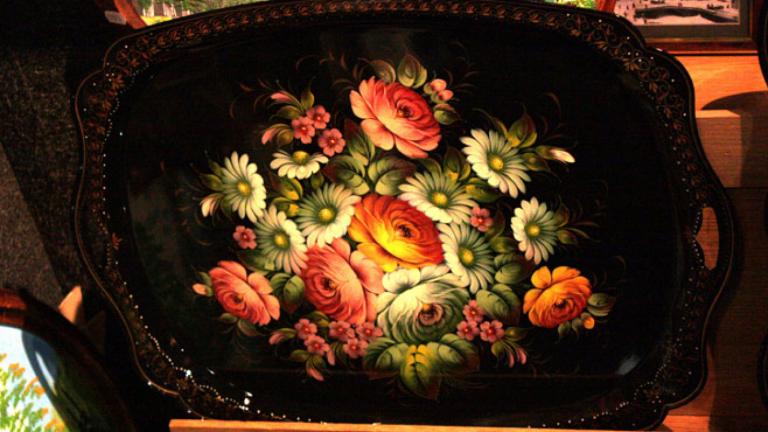
The second is the bionic type, which was derived from the inspirations of craftsmen from animal and plant shapes, natural phenomena and other object shapes Ancient Chinese craftsmen liked to learn from the nature, which is another proof ofthe traditional chinese craftsmanship idea that the craftsmanship is implied in the natural law. Take the tool invention for example, being inspired by the sharp teeth of the leaf, Lu Ban invented the saw; and Zhou Gong created the vehicle after seeing thebitter fleabane twirling in the wind. There are even bionic inventions extending from simple appearance simulating to mental function imitating. For example, a kind of door lock made in the period of King mu of Zhou, while resembling the fish, it was endowed with the mental function that it would keep watch at night for fish keeps eyes open day and night. Some other examples are the Cricket Cage, the gong Chun Pot and Lotus-Frog Pot, the Story of Pottery Cat Pillow, and the Origin of the Bowl Bottom
The third is a marvelous type. In ancient books, there are cases of extremely ingenious crafts, e.g. the flying glede of Mo-tse and Lu ban would keep flying in the air for seven days, and the wooden ox of Zhuge Liang could walk on the rugged road unimpeded. The Yan Shi and the Puppet tells that the puppet of yan Shi performing for the King Mu of Zhou surpassed even the robot Craftsmanship of this type isbeyond the daily life and was dubbed the clever trick but useless craft”in the traditional society which respecting morality and despising craftsmanship
The fourth is a God-aided type, which reflects the idea that the craftsmanship not craftsmanship is extremely developed and almost reaches the Tao. “Examples are”o just is a technology but can move gods to lend a helping hand, implying that thethe o Yezi Casts the Sword the origin of the K’o-ssu, the empress nvwa Imparts skills and the Origin of the Batik. Tales of traditional crafts not only record the important craftsmanship, but also create the figures of moral craftsmen, or figures daring todisobey the power and wealth, willing to help others and cooperate with others, e. gthe Gongchun Pot and the Lotus-Frog Pot, the Tale of the Calystegia DahricafamestiaVase the vitrolite tiger the Kiln of the younger brother”and the Kiln of the elder Brother. “
The fifth is a blood sacrifice type. In ancient China, people revered the nature, and strived for the harmony between the nature and human and the unity of heaven and man. As a result, there was an idea that the great craft could be achieved through the harmony between the yin and the yang and the unity of heaven and man, and by sacrificing the man body. Examples are the tales the tale of gan Jiang and Mo Xie, the Beauty Sacrifice, and the Loong and Phoenix Pottery bed
There are roughly the types mentioned above. Considering the vast territory and abundant resources, multiple races, and rich technologies in China, there may be many other types existing in the country
Lu Ban, also known as Gongshu Ban, is a famous craftsman in the Kingdom of lu during the Warring State period. As society changed, craftsmen were freer, and the wide application of iron utensils drove the development of the craftsmanship. Against that backdrop, Lu Ban stood out for tool innovation and crafts making. Ancient books had recorded his innovated tools and daily utensils, with Yinkuo(tool for setting right the wood), animal head applique(the base of the bevel gauge, ink fountain, and saw going to him
Lu Ban was originally a carpenter, but he was long said to be engaged in copper and stone work. a tale in han dynasty told that Lu ban carved and painted the beam n palace of Luoyang and built the bridges near Chang’ an. Later, tales like that increased and people started ignoring the authenticity of the tale. Instead, they treated Lu Ban as an ideal craftsman. In later days, carpenters, masons, stonemasons, tent makers festoon makers bamboo article makers leather suitcase makers shipbuilders, vehicle makers all honored lu ban as their ancestor and the phenomenon of Lu Ban, honored as the inventor of many craft making techniques appeared
Ink Fountain, handed-down for generations, Hebei Province, 8cm in height. The ink fountain, made out of a whole mahogany, has a childish and unadorned style, portraying a child with a big fish and two peaches. Ink fountain, consisting of an ink duct, a line wheel, an operating handle, ink marker and a hook, is a must for marking long-short lines or vertical lines by artisans in such fields as carpentry and masonry works. With the ink duct filled with cotton saturated with ink, one end of the ink marker seeped with ink being fixed, a mark may be made by simply fling the ink marker at its mid-section after the ink marker is tightly pulled along onto the target position
In the Warring State period, there was a Kingdom of Yue where copper and iron enjoyed the best quality and a batch of sword casting master-hands emerged Among those master-hands, Gan Jiang was the best known craftsman. Gan Jiang came to Kingdom of Wu and married Mo Ye there. King he lu of Wu loved the treasured sword, so recruited them two. In order to cast the treasured sword King of Wu dispatched people to buy the best copper and iron, and ordered Gan Jiang to make the treasured sword within three months. If failed he would be executed. the couple worked day and night for two months, but the copper and iron stayed unmelted. The sands are running out, the couple had no idea what to do. Suddenly Gan Jiang mentioned that, to make the treasured sword within the limited time for King of Yue, his master together with his wife jumped into the furnace. Then the copper and iron were melted and the sword was made. After hearing that, Mo Ye resolutely decided to follow suit, but the idea stroke Gan Jiang that the nail and hair, transformed from the sperm of father and blood of mother, might be helpful. Then Mo Ye cut her hair and nail and threw them into the furnace Three hundred virgin boys and virgin girls spared no efforts to add coal and blast wind. Finally, the copper and iron melted and the unparalleled “male and female swords”came out the male sword engraved with tortoise shell lines, was called”Gan Jiang”and the female sword, engraved with water ipple, Mo Ye
Bronze Sword of King Goujian of Yue State in the late Spring and Autumn Period, 55.6cm x 4.6cm, kept in Hubei Provincial Museum. The sword blade has hidden diamond-shaped patterns and floral patterns on the grids are inlaid with blue azure stones and turquoises. The sword is still very sharp to date, and is a representative of famous swords of ancient Wu and Yue states.
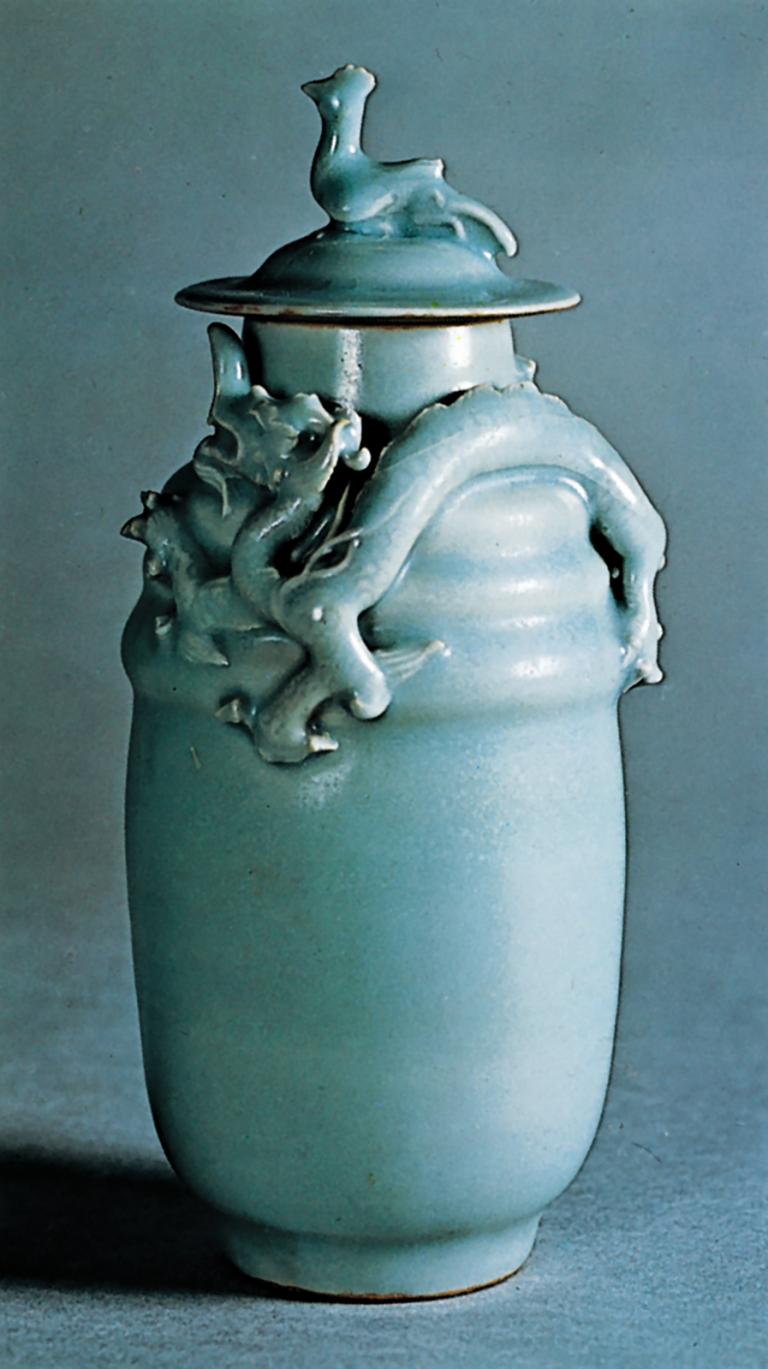
However there are different records like the records of the wu region (pinyin Wu Di Ji) which depicts that Mo Ye jumped into the furnace to make the sword, the Tales of Marvels(pinyin Lie Yi Zhuan) and the In Search of the supernatural(pinyin Sou Shen Ji, both of which even coin offspring for gan Jiang and Mo Ye to embark onthe tortuous revenging path, showing the power of craftsmen Story is like this: Gan Jiang consecrated only the female sword to the King of Wu, and hided the male sword. After the King found out, he put Gan Jiang to death. Mei Jian Chi, the son ofGan Jiang and Mo Ye, wanted to revenge his father after growing up, but the King had long taken precautions. Luckily, a swordsman was willing to help Mei Jian Chi. Mei Jian Chi gave the male sword to the man and then cut his throat. The swordsman, in the name of the male sword and Mei Jian Chi’s head, finally perished together with the King of Wu
Cloisonne, a typical Chinese craftwork, is originated and largely produced in Beijing. There is a tale about its name in the folk: One night in the palace in Beijing, a fire burned off all the priceless treasures in the throne room but two bright-colored jars, found by people while sorting out the remaining treasures in the ash. The emperor loved them so much that he ordered to assemble all the craftsmen in Beijing to counterfeit them in three months. The craftsmen in the 81 workshops became busy with this work. Scrutinizing the two jars, craftsmen found the body was made of gold and silver, covered by a layer of porcelain glaze, with gold wire inlaid in the glaze. But no matter how hard the craftsmen work to figure out the way to inlay the gold wire, the wire would not stick to the body. They also did not know how to sinter the color ceramic glaze.
One day, an old craftsman fell into sleep while contemplating. In the dream, the jar gave off colorful aureole and span around. A fairy, wearing jewel on the head, in colorful garment, and standing on the auspicious clouds, rhythmically told the words If you want the treasured jars to give off iridescence like a flower does, you have toplant the flower with your dexterous hands But without Baiji you can’t get the flower, without Eight Trigrams you can’t get the butterfly, and without being immersed in water or grinded by stone, the spring won’t stay for long. “After telling those words, the fairy vanished in the aureole. that dream was widely discussed by other craftsmen All of a once, they understood that, it’s the Empress Nvwa, who refined the stone to mend the sky passing skills here Baiji referred to the traditional chinese medicine Bletilla, which would became glue after being immersed in the water It could be used for splicing the gold wire. Then refined the color ceramic glaze in the Eight Trigrams Furnace, sintered it to the gold wire, and grinded the jar with water immersed stone grind. In that way, craftsmen finally worked out the unprecedented color-ceramic-glaze gold and silverware jar But all the jars belonged to the imperil palace, because they were burnt”out by that fire in the palace, so it got the name”burnt treasure In Jintai Emperor Period (1450-1457), the emperor cherished this craft, and they were mostly in peacock blue (lan”in Chinese), so called “Jingtailan”in Chinese
Cloisonne Enamel Colored Goblet of the period of Jingtai reign in the Ming Dynasty, 14.5cm in height, kept in the Palace Museum in Beijing. The goblet is made of gilded copper by the Privy Purse in the court. With a round shape, slim body, big opening and a ring foot, the goblet has a light blue glazed background fully decorated with lotus patterns
Qiu Chuji, also called Changchun in Taoism, pioneered the jade trade in Beijing. He is known as Ancestor Qiu in the jade craftsmen circle. At the end of the Southern Song Dynasty, Ancestor Qiu was born into a poor family in a town in Shandong. He learnt skills in a jade workshop near his home, to acquire the whole set of jade carving skills. But his father’s death interrupted his learning Afterwards, the war broke out and he had no way to get by, so carried people crossing the river for a living A taoist priest appeared and found him clever the priest accepted him as a follower In the following days, apart from preaching the priest would teach him reading and painting and let him travel in various places for broadening the horizon, researching the skills of carving jade and learning skills to help people. After that, Ancestor Qiu traveled to Henan, Sichuan, Shaanxi, Gansu, Xinjiang, etc, and learnt the skills of appreciating jade as well as many kinds of other craftsmanship
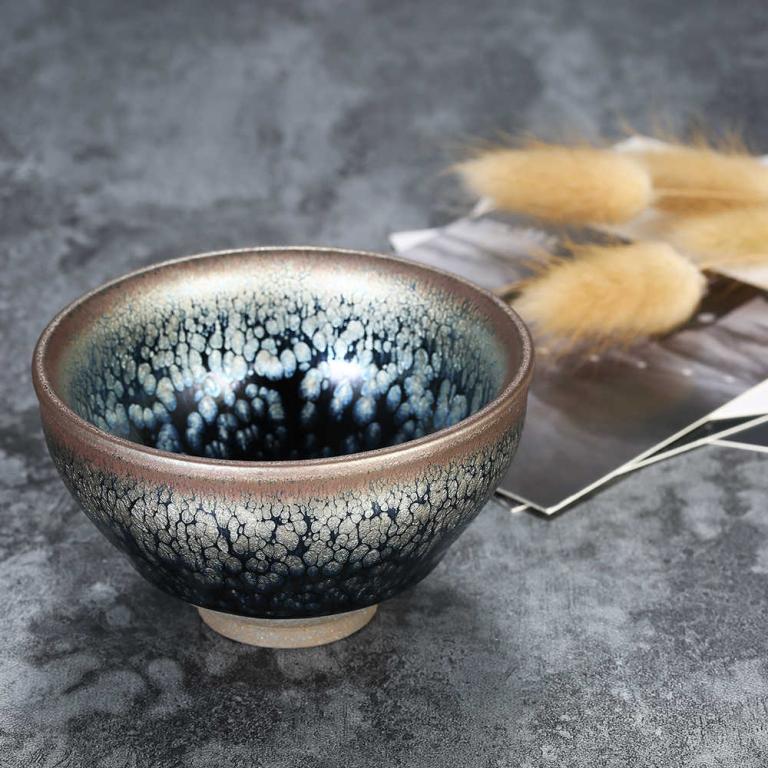
After Beijing was made the capital of Yuan Dynasty, Ancestor Qiu moved from Northwest China to Beijing, and settled in the Baiyun Temple, devoting himself to making jade wares thereafter. With horizon being broadened by the travel around thecountry, taking in the advantages of various skills and making use of the knowledge taught by the priest, he was able to make jade wares, all of which were elaborate ones Besides proficient at making jade wares, he taught the skills to students in accordance with their aptitude Advocated and supported by ancestor Qiu, the jade industr emerged in Beijing, and Baiyun Temple became the institute for him to instruct and train the students
Yixing in Jiangsu Province is hailed as the”Thousand-year Long Pottery Capital, with its purple clay teapots famous at home and abroad. If asked who contributes the most to the craftsmanship of purple clay teapot, local people would have the same answer-Gong Chun, and tell the story about how he made the gong Chun Pot and Lotus-Frog Pot
In the Ming Dynasty, Yixing s pottery trade took shape. In Yixing lived a Gong peasant family, raising an only child named Gong Chun, who loved watching his neighbor, an old monk making pottery. The monk, for fearing of losing his job if passed the skill, rejected to teach him. then Gong Chun had to study by himself. One night, he saw the shadow of the peach knurr in the moonlight, finding it unique and interesting. Inspired by that, he managed to make the purple clay teapot with the peach knurr as the body. Natural as if made by God simple but elegant, it was a breakthrough of purple clay pot craftsmanship, and called the Gong Chun Pot When ordered by the greedy local magistrate to make the pot for him, Gong Chun, never flattered the power before agreed this time. but what he made was the lotus frog pot with the magistrate as the model. The frog with mouth widely open, boregreat resemblance to the magistrate. The gong Chun Pot was not only a masterwork of the purple clay pot but also a satire to the greedy officials
Celadon Bowl, produced in the Northern Song Dynasty, was fired on kiln spurs(spur-aided firing),a technique which enables full glazing but can not be sued for firing large artifacts and was primarily used in the imperial court in Tang and Song dynasties
The back of a batik embroidered garment for women, a Miao ethnic craft, made in the Qing Dynasty. This piece is decorated using batik dyeing and embroidery techniques, with both sleeves and the back covered y batik geometric designs, the space between the neckline and the upper part of the front opening decorated with embroidered trimmings, and the geometric embroidered trimmings on the back divided by plain red. black and green stripes, presenting a strong sense of rhythm. The batik part is coated with red color after dyeing and dewaxing, and some areas have already faded.
Once upon a time, an emperor was fond of the blue-and-white porcelain bowl from the cizhou kiln however he was not satisfied with the bowl bottom which was often too hot to hold when filled with hot soup he ordered craftsmen to make hand friendly bowls the kiln man Wan ‘ er volunteered to make it. He added a pair of “ears to the bowl, and it became a jar, and a handle, the bowl became a pot. But the problem remained unsolved he contemplated for days and was so tired that he fell asleep. His cotton-padded jacket was lighted by the burning candle beside his. Then his mother came to put out the fire. She stamped the fire but the fire was even fiercer Wan’ er was waken up by it and found his mother in the middle of the fire with theshoe sole smoking. He took his mother away from the fire immediately and took off her shoes. To his surprise, her feet and shoes were safe and sound for being protected by the wooden soles. Enlightened by the wooden sole, Wan’ er fired a kind of bowl with a solid-wood pad on the bottom that very night. Afterwards, the other kiln men minding that the pad was too cumbersome and unbecoming changed the pad into the annular bowl base Looked like attached to the bowl, but actually not, it did well in heat insulation
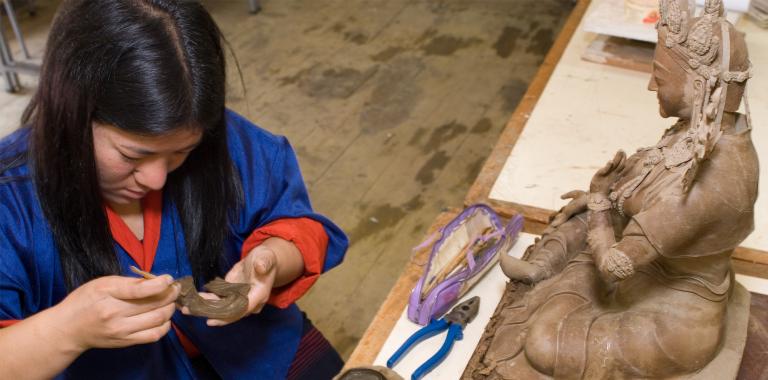
Another tale of the bowl base went around in local place. In the Ming Dynasty, Prince of Yan, on his trip passing by pengcheng city(now the Xuzhou city), was fondof the glistening baseless flower-pattern bowl, but was scaled by the hot bowl when approached it. he ordered to fire the bowl not hot for hand within five days. the task was undertaken by the highest-skilled craftsman “Nie wan San”in local place at night he saw the ball alike cloud on the melon rind alike moon and then got the idea to make the rind alike clay pieces and attached them to the bottom of the bowl, which would not be too hot any more. Since then, bowls in Pengcheng City had gotten the bottom. Later on, kiln men changed the clay pieces into a ring, achieving even better heat insulation effect
In the Miao ethnic group area in China, there is an old folk song The Song of Batik It is said that, long long ago, a smart and beautiful miao girl was discontented of the simple color of her dress and hoped to batik different flower patterns on it. But limited by the craftsmanship, the dress could only be painted one by one by hand. She couldnt come up with better ideas and was in low spirits. One day, when she fell asleep while staring at the flowers growing on all over the mountain. In the dream, a beautifully dressed fairy led her into a garden of all kinds of flowers, where birds were twittering and flowers smelled nice, and butterflies were dancing and bees busy gathering honey. Being fascinated, she was not aware of the bees crawling on and covering her dress at all. After she woke up, she found the honeydew and beewax spots on her dress and had to re-dye the dress to cover the spots in the indigo dy bucket. After that, she immersed the dress into the boiling water to clear the surface dye. Then she took out the dress, but here was the magic: The position once stained by the beewax appeared the beautiful flower patterns the girl had a flash of wit she got the beewax to stew into liquid, dipped the twig into it to draw wax flower patterns on the white cloth, put the cloth into the indigo dye bucket, and then put the cloth nto the boiling water to melt the wax. As a result, different beautiful flower patterns appear on the cloth. She was so excited that she couldn’t help singing. Peopleattracted by her singing came to see what happened They found the nice flowery dress and wanted to learn the skill of dyeing it. In the way the girl taught them, they made cloth of a great variety of patterns.
In the period of the reign of Emperor Qianlong of the Qing Dynasty(1736-1795)there was an ordinary painter called shen Shao’ an in Fuzhou, who ran a store near the Shuangpao Bridge, majoring in oil paint processing and sidelining in the sales of lacquerware, painted bowls gods worshiping boards etc since he got few companies he often came to the house of the officials or the temples for making lacquerware One day when he was working in the temple, he found the horizontal inscribed board over the gate rotten, but the base mounted by the painted linen intact. The scrupulous man was enlightened. He made clay figures, clay flowers and birds first, and then applied the paint and linen or silk one by one to mount the figure. After the cloth and paint got dry, he immersed the object into water to dissolve the clay grinded the hard cloth surface, and decorated it with color paints. Then the bodiless lacquerware came out Therefore he is honored as the ancestor of bodiless lacquerware, which is featured with empty inside, light, beautiful, and durable, favored by people. Since then, the bodiless lacquerware from Fuzhou, together with cloisonne from beijing and porcelain and pottery from jingdezhen of jiangxi got the title of Three treasured traditional chinese crafts
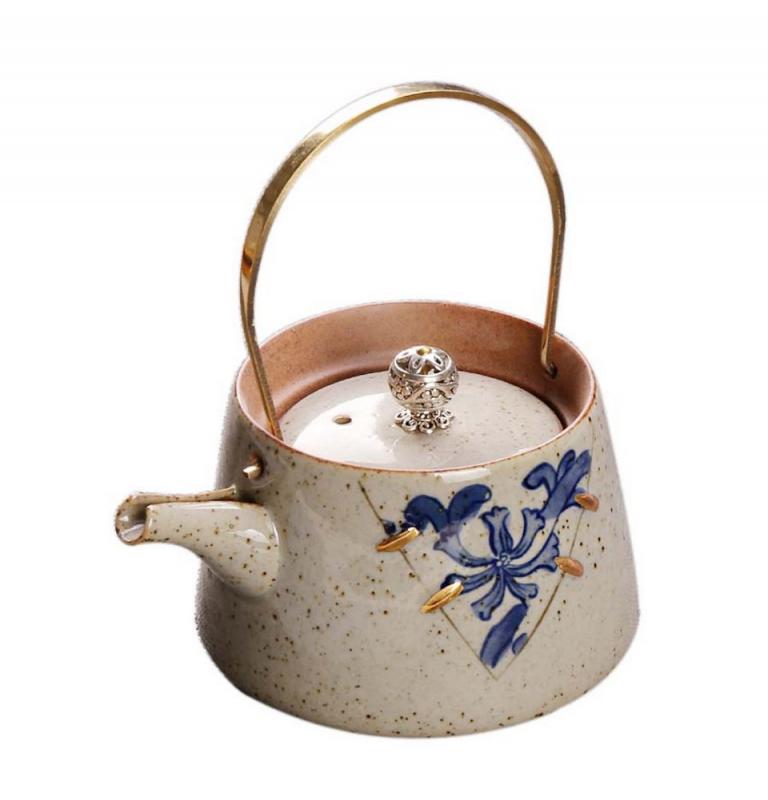
The tales told above are the typical ones among numerous tales of traditional Chinese craftsmanship. In the long evolution course of the traditional craftsmanship, almost every invention or development of a craftsmanship associates a beautiful story The tale is handed down from generation to generation with the craftsmanship, and usually contains the ingenuity, interest, and philosophy and reflects the pursuit of people for the true, the good and the beautiful. From the tales we could find the key of craft creation and trace the path of social chang.
As stated in the Book of Changes written in the Zhou dynasty, Things were produced for practical use, and various professions were set up for craftsmen thoseefforts were all intended for the public good, and ascribed to sages. It means thatmost of the utensils making life easier are invented by the sage, demonstrating the idea that the sage creates utensils and various skills are for practical purposes. the You Xue Qiong Lin was the initial teaching material widely used in the folk in Ming and Qing dynasties. In it the beauty of utensils, skills and craftsmanship are described like this: “marvelous techniques seemingly have no practical use, while ordinary techniques are helpful in daily life. Core idea of it is for emphasizing the practical value of the craftsmanshipBodiless
Bodiless Red Lacquer Tray Shaped like Chrysanthemum Petal, with a flat inner bottom and adequate chrysanthemum petal-shaped rims, smooth and simple without patterns, made in the Qing Dynasty, kept at the Palace Museum in Beijing. Adopts bodiless lacquer ware-making technique, the tray is light and thin, with walls as thin as paper measured at about half a millimeter, a color like red coral and a smooth, delicate and shiny sheen
Tales of folk crafts have been also significantly influenced by the tao-driven Techniquedoctrine, believing that the ultimate purpose is not to make the utensil perfect but to make it reach the Tao. Of course, it is also related to the inheritance way of craftsmanship in ancient China. At that time, the master usually kept some high skills from their apprentices for ensuring his income. So craftsmanship talesascended to a level of industrial worship. The listeners not only believed all the content but also had the worship psychology hoping to learn skills, and to be protected and to be endowed with good fortune. The character in the craftsmanship tale invents or improves some skill is always worshiped as the ancestor of the industry.
All techniques are intended for practical use and driven by tao, representing two wings of the traditional Chinese Tao-utensil thought, and constituting the best part of traditional Chinese culture. The craftsmanship culture reflected in those tales, as an important part of traditional Chinese culture, is the best example of the aforesaid thought In daily life, it has produced far-reaching influence on the traditional view of utensil application of Chinese people
Ceramics, lacquer ware and bronze vessels are the main types of Chinese daily utensils. They we re dominant in different periods. Ceramics are one of the most important kinds of art ware in Chine se traditional arts and crafts. In the early Neolithic Period 8,000 years from now, pottery ware was made and used in China; in the mid Shang Dynasty(the 16 h century BO), primitive porcelain ware e merged. In terms of arts and crafts, pottery and porcelain represent two different development sta ges of arts and crafts. Porcelain evolved from pottery, and they have certain differences in raw mat erials, burnt temperatures and physical properties. After the emergence of porcelain ware, pottery ware production did not stop. They developed in two separate directions instead, became the main tensils in Chinese people’s daily life, and are still used today In man’s Bronze Age, bronze was an important material for making utensils. China’s Bronze Ag e lasted from the 21 century BC to the 5 century AD Bronze vessels are glorious examples of Ch inese art of that period. In the Shang and Zhou dynasties, bronze vessels reached the first peak, an d sacrificial vessels were the main type; the second peak was reached in the Spring and Autumn Peri od and the Warring States Period when vessel shapes became more practical. After the Han Dynast y, because bronze vessels were less exquisite than lacquer ware and more expensive than porcelain ware, their function of daily use was gradually replaced by lacquer ware and porcelain ware China was the first country to invent lacquer ware, and the use of lacquer has a long history. La cquer ware thrived in periods of great prosperity. In ancient China, lacquer””were as sociated with each other. Big ceremonial articles and small eating utensils were all indispensable in d aily life. Such daily need provided an extensive social basis for the existence and development of lac quer art. Modern lacquer painting has become a new type of modern painting organically integratin g lacquer materials’ natural beauty, manual craftsmanship and the concept and visual language of m odern painting









